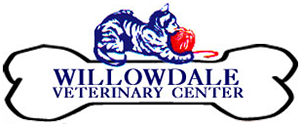Library
-
Enzymatic toothpaste (brand name C.E.T., others) is a product used at home by pet owners to aid in tooth brushing that minimizes plaque and tartar formation on the exterior of the tooth (the crown), and also assists in the maintenance of good oral hygiene. It can be used on both dogs and cats.
-
Epineprhine is a drug used most often in emergency situations for animals (e.g., anaphylaxis, cardiopulmonary resuscitation/CPR). It may be added to local anesthesia drugs due to its ability to cause veins to constrict, thus delaying the body’s absorption of the drugs and prolonging the duration of the local anesthetic duration.
-
Eprinomectin + praziquantel (brand name Centragard®) is a topical (spot-on) antiparasitic drug used to treat and control hookworm, roundworm, and tapeworm infections, and to prevent heartworm disease in cats and kittens that are at least 7 weeks of age and weigh at least 0.8 kg (1.8 lb). Do not use in cats known or suspected to have two copies of the MDR1 gene mutation.
-
Erythromycin ophthalmic is an antimicrobial medication used to treat certain types of eye infections. It may be used “off label” or “extra label” to treat other eye conditions. Erythromycin ophthalmic comes in ointment form. Caution when using this medication in pocket pets as fatal diarrhea may occur if ingested orally.
-
Esafoxolaner + eprinomectin + praziquantel is given topically on the skin to treat and protect against various internal and external parasites and prevent heartworm in cats. Side effects are rare but may include hair loss at the application site, gastrointestinal upset, skin reactions, or neurologic signs. Use caution in sick or underweight cats. If a negative reaction occurs, please call your veterinary office.
-
Fentanyl is an opioid medication used off-label to treat pain in cats and dogs. It is often given as an injection in hospital, but patches may be prescribed to deliver fentanyl transdermally (through the skin) for pets at home. This handout describes common side effects, risk factors, and drug interactions. If a negative reaction occurs, please call your veterinary office.
-
Fluocinolone + acetonide DMSO (brand name Synotic®) is applied topically and is labeled to treat ear inflammation in dogs. It is also used off-label to treat ear infections in cats. Give as directed. Side effects are rare but may include temporary hearing loss or skin reactions. Do not use on pets allergic to corticosteroids or DMSO, on pets with a ruptured ear drum or pets that are pregnant.
-
Frunevetmab is a formulation of feline anti-nerve growth factor antibodies used to control osteoarthritis pain in cats. This medication is given by an injection under the skin, usually at the veterinary clinic. Side effects may include vomiting, diarrhea, appetite loss, itching, scabbing and hair loss on the head and neck, and pain at the injection site. Call your veterinary office immediately if you suspect an overdose or an adverse reaction to the medication.
-
Gentamicin + betamethasone ophthalmic is a steroid anti-inflammatory eye medication with antibiotic used for the treatment of external eye infections and inflammation of the eye in dogs. It is also sometimes used to manage pannus or pigmentary keratitis in dogs. It may be used off-label in cats and horses.
-
GMHa (brand name: Easotic) is a combination antibiotic, antifungal, and corticosteroid anti-inflammatory drug used to treat certain bacterial and yeast ear infections. GMHa is a suspension used once daily to treat ear infections. This article discusses dosage, potential side effects, risks, and monitoring.
